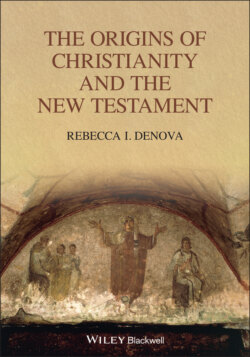Читать книгу The Origins of Christianity and the New Testament - Rebecca I. Denova - Страница 9
Origins
ОглавлениеThe purpose of this book is to introduce lay readers (whether Christians or participants in other religious and nonreligious systems) to the origins of the movement that became Christianity. It can also serve as a secondary text for academic courses in the origins of Christianity. The study of “origins” is crucially important, not only to study the past, but to understand what gave rise to concepts and beliefs that remain a major aspect of our modern heritage. Many Christians learn the ritual formulas, but without the historical background of what gave rise to those formulas.
Although some Christians believe that Christianity was simply “revealed,” it did not arise in a vacuum. The immediate historical context is Second Temple Judaism (c. 450 bce – 70 ce) in the province of Judea in the Roman Empire with its cultural inclusion of Greco-Roman society. An exploration of the people and societies at that time elucidates the contribution of both in the origins of the movement.
The analysis of the ancient world relies on primary documents when available – the literature that was produced at the time. In the study of the origins of Christianity, the primary documents are what became the New Testament. The final version of the New Testament contains four gospels (Mark, Matthew, Luke, John), a history of the missions (the Acts of the Apostles), fourteen letters assigned to Paul, seven letters assigned to others, and one apocalyptic text known as the Book of Revelation.
Scholars debate the dates of some of the texts (some in the second century), but they all demonstrate teachings of various communities in the first century. Learning to read these texts in relation to the people and the societies that produced them is the goal of this book.
